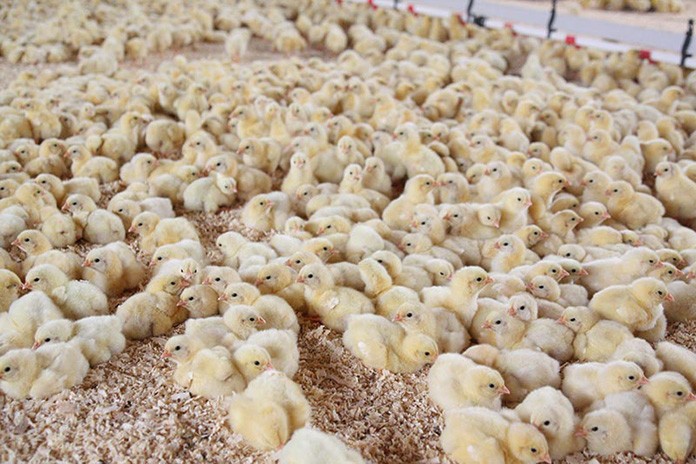
In commercial settings, hatching occurs over a 24-48 h window and chicks are held in the incubator until a majority have cleared the shell.
Earlier hatching broiler chicks therefore have a longer fasting period post-hatch within the incubator than later hatching chicks. Upon removal, hatchery procedures and transport to grow out farms delay access to feed and water to all birds by up to a further 48 h.
Delayed access to feed post-hatch impairs body weight gain and relative breast muscle weight. Chick hatch time has also been shown to influence breast muscle growth potential, although previous observations have only reported on 5 d, and 18 d birds, respectively, with conflicting results.
To elucidate the relationship between hatch time and muscle growth potential, male chicks were identified as early (EH), midterm (MH), or late (LH) hatchers based on their time of hatch and were provided either immediate access to feed upon removal from the incubator, or were withheld from feed and water until 24 h after the end of the hatch period.
Fertile Ross 308 eggs (n=1307) were obtained from a commercial hatchery, and incubated at the University of Sydney (Camden, NSW). The incubator was inspected every 3 h from 468 to 517 h of incubation and hatched chicks were removed, feather sexed, weighed, and tagged. Female chicks were excluded from the study. The first 170 hatched male chicks were assigned to the EH group. The next 12 hatched male chicks were excluded from the study to separate the hatch time subpopulations. This procedure was repeated for the MH, and LH groups. Chick body weight was measured at the time of hatch, and 4, 7, 14, 28, and 40 d. Ten chicks per treatment were sacrificed at the time of hatch, 0, 1, 4, 7, 28, and 40 d and the breast muscle (including sternum) was weighed. Breast weight is reported relative to chick weight.
Average individual hatch time after onset of incubation was 497.7 h for EH, 508.8 h for MH, and 514.5 h for LH chicks. Hatch time did not affect body weight at hatch. From 1 through to 28 d of age immediate access to feed increased body weight gain. Early hatched birds gained the most weight through to 14 d, except at 1 d when MH birds had the highest body weight gain. Relative breast weight was also increased at 4, 7, and 28 d in birds that had immediate access to feed. Relative breast weight was increased in EH compared to LH birds at 4 d, and in EH and MH compared to LH birds at 7 and 28 d. Relative breast weight was increased in EH birds regardless of access to feed and despite no difference in body weight at 28 d.
Providing hatchlings immediate access to feed and water significantly increased bird growth until 28 d. A positive relationship was also observed in relative breast weight with EH chicks, regardless of access to feed. As the age of slaughter in broilers continues to decrease, the impact of hatch time and immediate provision of feed will become increasingly important contributors to efficient chicken meat production.
















